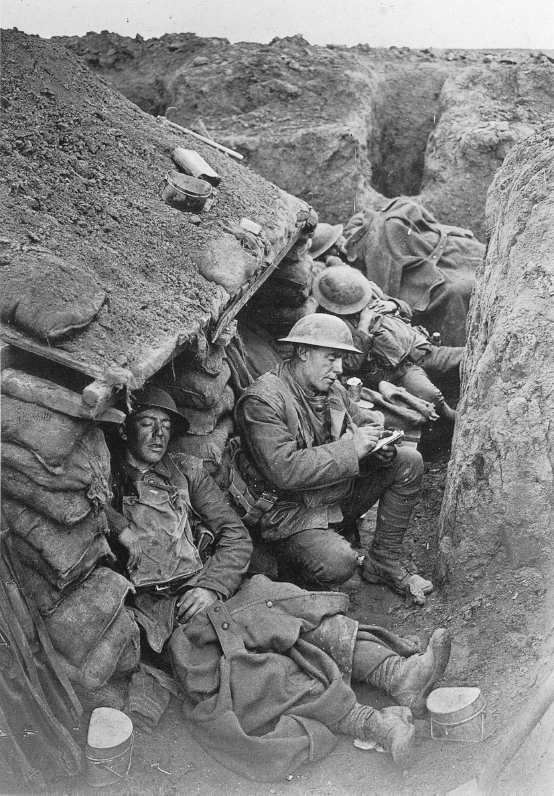Understanding Western Society
Printed Page 781
| > | How did the First World War differ from previous wars? |
WWHEN THE GERMANS INVADED BELGIUM IN AUGUST 1914, they and everyone else thought that the war would be short and relatively painless. On the western front in France and the eastern front in Russia, the belligerent armies bogged down in a new and extremely costly kind of war, termed total war by German general Erich Ludendorff. At the front, total war meant lengthy, deadly battles fought with all the destructive weapons a highly industrialized society could produce. At home, national economies were geared toward the war effort. The struggle expanded outside Europe, and the Middle East, Africa, East Asia, and the United States were all brought into the maelstrom of total war.

Writing Home from the FrontCramped within the tight network of trenches on the western front, a British soldier writes a letter home while his compatriots rest before the next engagement. The post was typically the only connection between soldiers and their relatives, and over 28 billion pieces of mail passed between home and front on all sides during the war. (© Imperial War Museum (CO 2533))